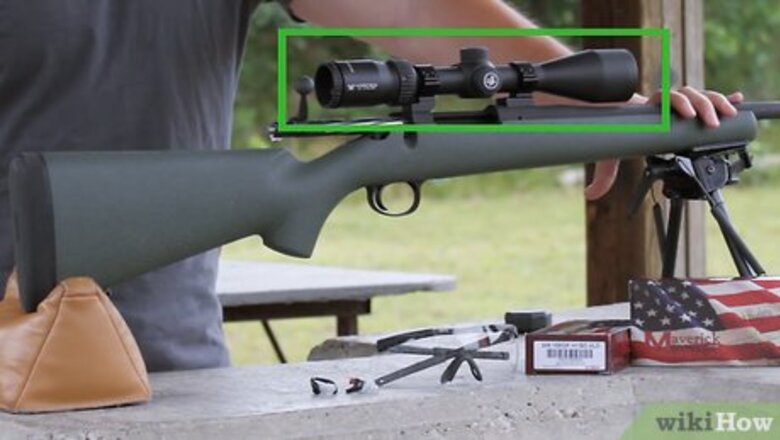
views
Mounting and Understanding Your Scope

Purchase the appropriate mounting equipment. Most modern rifle scopes come either pre-drilled and tapped for a scope base or with grooved sections for mounting attachments. It’s important that you purchase mounting hardware that matches the design of your scope. If your scope requires mounting rings, ensure you purchase ones with the correct inside diameter, as the body of the scope will be mounted inside the ring. If you are unsure of the hardware you will need to mount your scope, ask the retailer your purchased the scope from to assist you in choosing the right mounting hardware. If you purchased your rifle with a factory installed scope you will not need to purchase any hardware. Gunsmiths can mount and bore sight your scope for you for a fee if you would rather not do it yourself.
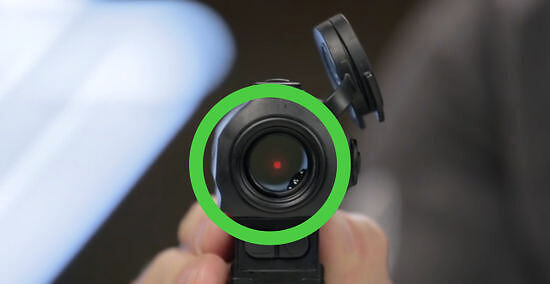
Align the reticle and adjust the eye relief. The reticle of your rifle scope is the image you see on the lens of the scope that indicates where the weapon is pointed. It is usually a cross, though there are many reticle variations that include circles, exes, and a number of others. With the mounting rings loose, rotate the scope until the reticle is right side up or until the cross is properly aligned (like a plus sign). With that done, adjust the distance the lens of the scope will be from your eye to ensure it won’t hit you when the weapon recoils. As a general rule of thumb, mount the scope an inch further forward than you feel is safe to be certain you won’t injure yourself or damage the scope when firing. You can adjust this distance more later. Make sure you can easily see the reticle in your normal firing position.
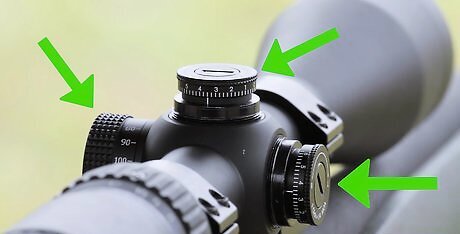
Familiarize yourself with the different parts of the scope. While there are many rifle scope manufacturers, nearly all of them utilize the same basic components. Before you take your scope out shooting, you should learn what each piece of your scope is called and what it does. A rifle scope is usually comprised of a body, eye piece, objective lens, shoulder, and windage, elevation and parallax knobs. The eyepiece is the part of the scope you look through and the objective lens creates the magnification of the target. The shoulder of the scope is where the diameter increases to hold the objective lens. Windage and elevation knobs can move the reticle side to side and up and down. Parallax knobs are rarely adjusted and affect the movement of the reticle in relation to the target.

Determine if your scope has a single or variable power lens. A single lens scope provides one level of magnification, whereas a variable power scope has a ring that allows you to choose between different levels of magnification. Most rifle scopes are single powered, but if you’re unsure which your scope is, look for a power selector ring past the shoulder of the scope but before the objective lens. This adjustable ring will permit you to choose between different levels of magnification the scope can provide. If you have a variable power lens in your scope, choose a setting for the purposes of zeroing the rifle and keep it on that until the scope has been properly zeroed. When hunting or in tactical situations, keep variable lens scopes set to the lowest magnification power to allow for the widest field of view while using the scope.

Assess the level of magnification your scope provides. You can determine the strength of your scope by looking at its model number. Scope model numbers include two distinct elements: the level of magnification and the diameter of the objective lens. A scope that is “4 x 30” means that an image will appear to be four times larger through the scope than it would appear to the naked eye. The 30 indicated the number of millimeters the scope’s objective lens is in diameter. Remember that the higher the magnification, the darker your target will appear to be through the lens due to the amount of light that can pass through it. Larger diameter lenses allow more light to enter the scope, thus making the image brighter. The higher the first number in your scope’s model number, the stronger the level of magnification it provides. Scopes with variable power will have model numbers like “4-12 x 32,” which means you can adjust between four and twelve times magnification.
Aiming and Making Adjustments
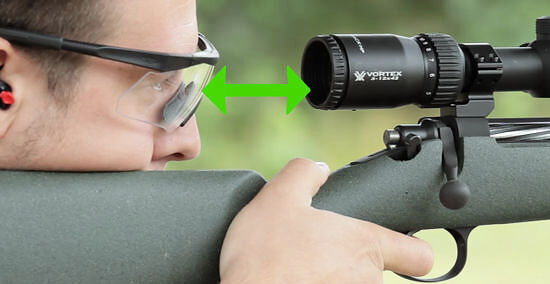
Determine the proper eye relief distance from the scope. Eye relief is the distance the eye piece is away from your eye. The stronger the magnification of the scope, the narrower the proper eye relief will have to be in order to accurately see your target through the scope. In other words, the more powerful the magnification, the closer you will need to hold your eye to the eye piece in order to capture good sight picture. Many scopes will come with an eye relief rating that will look like 3-9x. This means proper eye relief is between 3 and 9 inches from the eye piece. Be extremely careful. Keeping the scope too close to your eye may result in it hitting you due to recoil when firing. If your scope does not provide an eye relief rating, determine it yourself by looking through the scope while it’s mounted on the rifle and adjusting it until you can achieve good sight picture.

Establish good sight picture. Without a scope, good sight picture involves aligning the rear sight aperture with the front sight tip on the barrel, but your scope eliminates the need for those types of iron sights. Instead, good sight picture with a scope involves centering the reticle in your field of view, and positioning the reticle over your target. Your view should form a circle at the end of the scope that is perfectly centered. If there is more black on one side or the other, adjust the weapon until it is centered. Depending on your shooting position, it may be difficult to maintain good sight picture. Placing the weapon on a table or using a bipod can stabilize the weapon and give you an opportunity to achieve proper sight picture. Capturing good sight picture is more difficult with high magnification scopes than it is with lower ones.
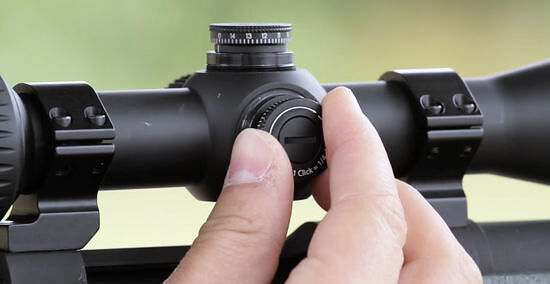
Make adjustments based on the impact of your rounds. Be as consistent as possible when firing rounds at the target, and assess where they impact. Fire three to five rounds and look at your grouping. If you are firing consistently, each of the rounds should impact the target in about the same area. If that area is to the left of your intended target, you will need to adjust the windage to the right. If you are impacting the target too high, you can adjust your elevation to lower where the rounds hit the target. While different manufacturers and models of scopes will have slight variations, the windage knob will always adjust the impact point of your rounds on the horizontal axis (left to right). Elevation knobs adjust your aiming point on the vertical axis (up and down). Refer to the manual for your scope to know how far each click of the windage and elevation knobs will alter your aiming point.
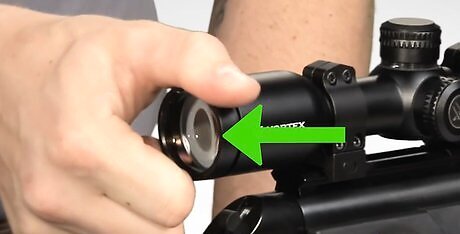
Adjust the parallax if need be. Some high end scopes allow you to adjust a third variable in the scope: the parallax. Parallax is the movement of the target as it relates to the reticle in your field of vision when you move your eye away from the center of the eye piece. An issue with your parallax may cause the target and the reticle to appear to be on different optical planes. For many years, nearly all scopes came with an established and non-adjustable parallax because it is uncommon to need to adjust it and fairly difficult to understand. Under most circumstances, you will not need to adjust the parallax. To adjust the parallax (if you have the necessary knob) try the following: Look at the target through your scope and ensure the reticle is completely visible and clear. Move your head up, down and to either side as you adjust the parallax knob slightly. Continue to adjust the knob until the reticle no longer seems to move in relation to the target.
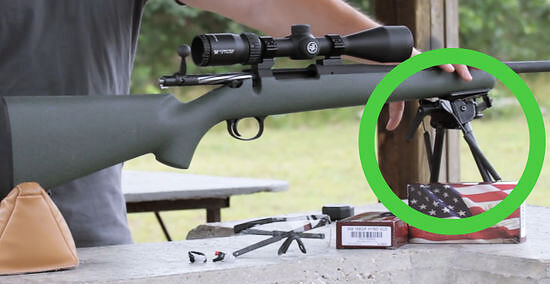
Use these tools to zero the rifle. Once you have gained a solid understanding of how to make adjustments to the aiming point of your rifle scope, you can zero the rifle. Zeroing a rifle involves choosing a set known distance and setting up your scope so that the reticle falls exactly where the rounds impact your intended target. To do so, you must eliminate variables you introduce as the shooter by moving the weapon unintentionally due to things such as heart beats, breathing, and muscle fatigue. Using a bipod or firing table can help you to keep the weapon completely still as you fire rounds to establish a zero. Use the windage knob to move the impact point horizontally and the elevation to adjust it vertically. Practice proper breath control by breathing in, then out, and firing the weapon in the natural pause between your exhale and the next inhalation. Utilize good trigger control by squeezing the trigger in a slow steady motion, then holding it in the fire position for a second after firing a round. Aim at the exact same point with each round, then adjust the scope to bring the reticle and impact points together.
Storing and Maintaining Your Rifle Scope
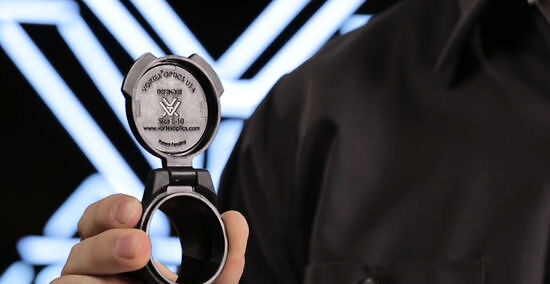
Always place covers over the lenses when not in use. The lenses on your rifle scope can be easily ruined by scratches or abrasions, so immediately place a lens cover over both the front and back of the scope when it is not in use to avoid damaging the lenses. Replacement lens covers can be purchased at many fire arms and sporting goods stores. You can also purchase sleeves to protect the entire scope from damage when not in use.
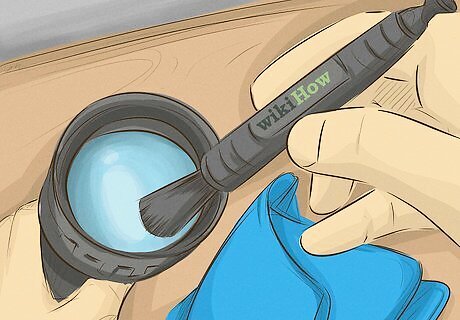
Use a lens brush to remove dirt or sediment from the lenses. Because wiping the lenses of your rifle scope with a non-optical cloth may cause damage to the lens itself, it’s best to utilize a lens brush when cleaning your rifle scope. Lens brushes use extremely soft bristles that are designed specifically not to damage the lenses of your scope while cleaning them. Do not use cloth to wipe the lens unless it is specifically designed for optics and after you’ve already brushed away any sediment stuck to the lens. Wipes that are made to clean eye glasses may be used to wipe away fingerprints or smudges on the lens of your scope. Lens cleaning fluid can also be used to help remove stuck on smudges. You can purchase lens brushes at most firearm or sporting goods stores.
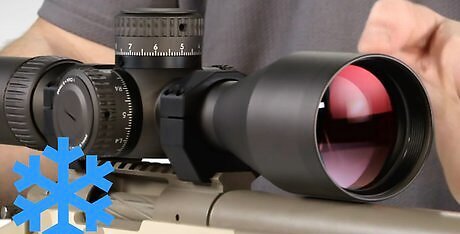
Avoid storing the scope in hot places or direct sunlight. Extreme temperatures can negatively affect the internal lubrication of your rifle scope. Scopes are permanently lubricated and require no maintenance, but because of that you cannot replace lubricant that has been cooked by extreme heat. Direct sunlight can also have a damaging effect on your rifle scope, as the magnification of the objective lens can literally burn the inside of the scope. Store your scope in a vehicle’s trunk, gun cabinet or closet to protect it from heat and direct sunlight. Avoid storing your rifle scope in the passenger compartment of your vehicle on hot days.

Clean your rifle scope as necessary. Almost all rifle scopes are sealed and require no internal maintenance. To clean your scope, simply use a soft dry cloth to wipe away any smudges, fingerprints or sediment that settles on the exterior of the body. Do not submerge your rifle scope in water to clean it or you may damage the seals. Aside from regular optics wipes, you may choose to use anti-fogging optical wipes to clean the lenses of your scope. Always use a dry cloth when cleaning the body of the scope. Be careful not to adjust the windage or elevation settings while cleaning the rifle scope.












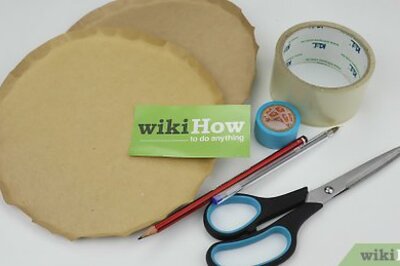







Comments
0 comment